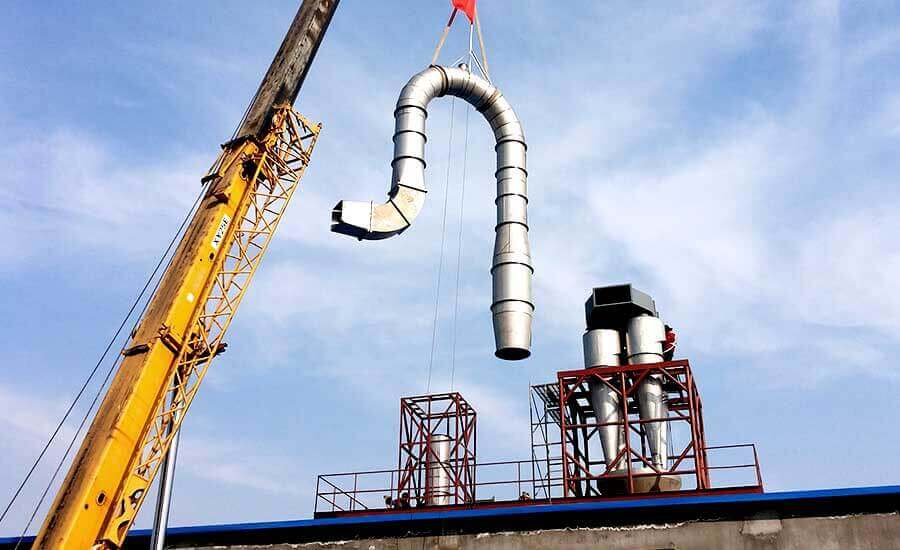
At present, airflow drying (also called flash drying) generally used in starch factories is completed in an instant. Therefore, the moisture inside the starch particles has been dried before it can gelatinize, so gelatinization or degradation will not occur.
Airflow drying is a parallel flow drying process, that is, the parallel flow process of wet powder materials and hot air flow, which consists of two processes: heat transfer and mass transfer. When wet starch comes into contact with hot air, the hot air transfers heat energy to the surface of the wet starch and then transfers it from the surface to the inside. This process is the heat transfer process.
At the same time, the moisture in the wet starch diffuses from the inside of the material to the starch surface in liquid or gaseous form and diffuses from the starch surface to the hot air through the air film. This is a mass transfer process. That is, the high-temperature airflow and the wet starch are evenly exchanged in the drying tube to make the dried starch powdery, and it can be packaged and stored after cooling.
Its characteristics are easy installation, centralized heating, large heat supply, significant energy-saving effect, and low-temperature 50-degree drying to ensure the original flavor of the starch, especially for the secondary processing of the dried starch into vermicelli, which effectively maintains the high quality of the product.
The method of drying starch naturally has many disadvantages, such as being affected by the weather. If it encounters continuous rainy weather, it cannot be dried; for example, pollution. During the drying process, dust, leaf fragments, and other impurities are easily mixed into the starch, causing secondary pollution.
After mechanical dehydration, starch still contains 38%~40% moisture, which is evenly distributed in various parts of the starch. Therefore, only by drying can the excess moisture be further removed.
In the process of starch drying, there is a term called gelatinization temperature. When heated to a temperature exceeding the allowable temperature (55℃-58℃), local granular gelatinization will occur and large lumps will be formed, resulting in waste.
When most of the moisture is removed from the starch, the starch is heated above the allowable temperature, which will cause the starch to lose its luster and reduce its viscosity. The work of airflow dryers of various systems is based on the principle of drying loose starch in a moving hot air flow.
The speed of the starch-air mixture moving along the drying pipeline is often greater than the speed at which the starch particles are retained in the airflow, and the general speed is 14-20 m/s. At this speed of the mixture, the drying of the starch lasts for 1-2 seconds, which is almost instantaneous.
This allows the use of higher air temperatures in the airflow dryer, and generally, there is no need to worry about the starch particles being heated beyond the allowable range, and it can ensure effective removal of moisture. The moisture content of the starch after drying is preferably 14%-15%.
There are many types of starch dryers, and the processing capacity varies. The starch dryer produced by Huatai starch machinery adopts low-temperature and low-tower drying technology to reduce energy consumption and ensure starch quality. 5-30 tons of dry starch are dried per day.